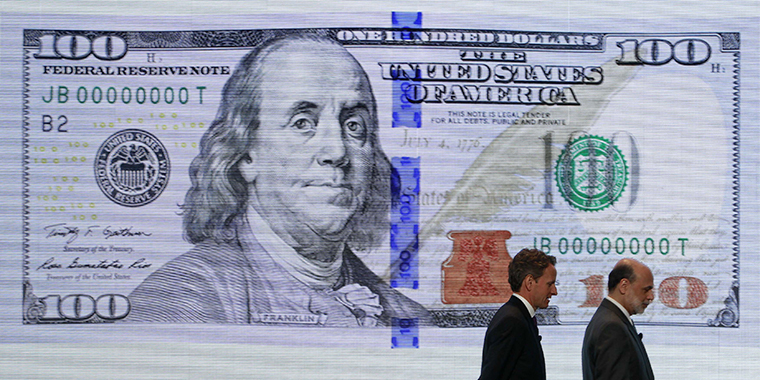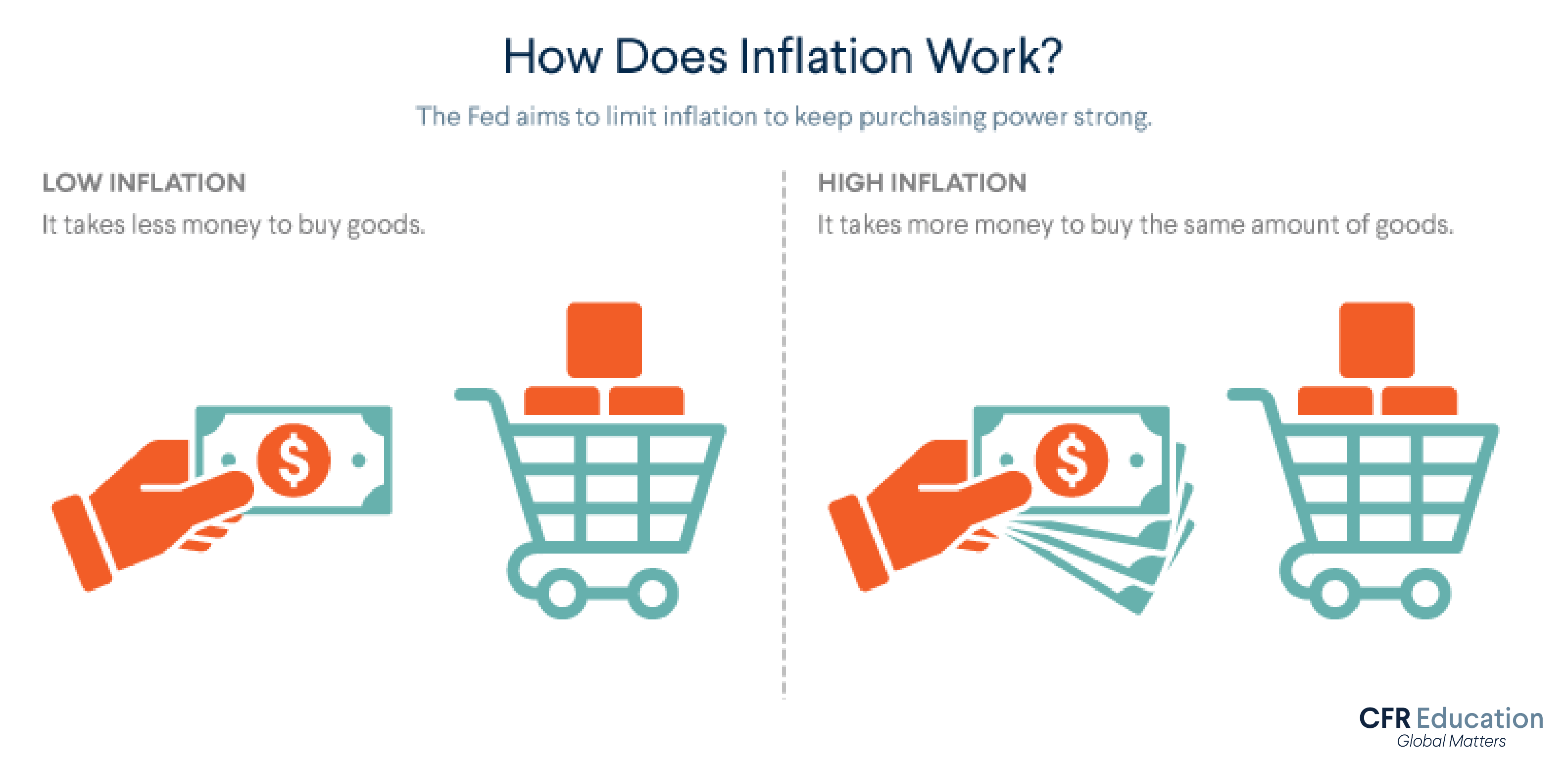What Is a Central Bank and What Does It Do for You?
What is the Federal Reserve? Learn how central banks conduct monetary policy by influencing the rate of inflation, money supply, and interest rates.
Central banks are what they sound like: centralized financial institutions of a country like the United States or a regional organization like the European Union.
Central banks are not, however, like the commercial banks (like Bank of America, Chase, or TD Bank) in which you might deposit money. Central banks conduct monetary policy, using various tools to influence the amount of money circulating in an economy, interest rates charged on loans, and the rate of inflation.
How do central banks manage inflation?
Inflation occurs when prices continue to rise, meaning a country’s currency is worth less than it was before because it can’t buy as much (also known as a decline in purchasing power). Inflation is a sign that the economy is growing, often because demand outpaces supply and consumers are willing to spend more money on goods. But high inflation is a problem because it discourages investment and lending and wipes out people’s savings as it erodes the value of money. For this reason, central banks work hard to keep inflation in check.
Deflation is the opposite of inflation—when there is a decline in prices. Too much deflation can drive higher rates of unemployment, and can eventually cause consumers to default on debt obligations. For this reason, economists often consider a balanced economy to allow for some inflation, but not too much—about 2% inflation is the ideal rate.
Why are central banks important?
Central banks are essential institutions, typically focused on keeping prices stable, maximizing employment, and helping a country’s economy grow. Experts agree central banks work best when they’re clear about their goals and policies, independent from the government and not under the sway of politics, and credible, or trusted. Although they share some similarity in goals, function, and structure, central banks in different places work differently. To illustrate what they do, how they work, and why they’re important to you, let’s examine the U.S. Federal Reserve System.
What is the U.S. Federal Reserve?
The U.S. Federal Reserve, sometimes called the Fed, is the central bank of the United States. The Fed is the most powerful economic institution in the United States and manages the country's monetary policy. Central banks, like the Fed, lend money to commercial banks in times of crisis so that they do not collapse; this is why a central bank is called a lender of last resort. And this is one of the reasons central banks matter. However, the Federal Reserve hasn't always been around to save the day.
The Fed is about a century old and came about as a result of a crisis.
In 1907, a financial panic swept the United States. It was characterized in part by bank runs, which occur when a majority of a bank’s clients panic about an economic crisis and try to withdraw their money simultaneously. The bank can’t fulfill all the requests, because it doesn’t keep all its deposited money available. Banks invest cash or loan out clients' deposits to new or expanding businesses or to individuals buying a house or a car, for example. The interest earned on these loans are how the banks make money. This is why when too many people try to draw out money at the same time, banks can face a crisis if they can't fulfill them all at once.
At the time of the 1907 panic, the U.S. economic system lacked a central bank. With no institution available to serve as a lender of last resort, the financier J. P. Morgan took on this role himself and came to the financial system’s rescue. The fact that one rich banker (and some of his rich banker friends) had to bail out the economy created an incentive for the government to enact bank reforms so that power over the economy wasn't concentrated in a few hands. So in 1913, President Woodrow Wilson signed the Federal Reserve Act, creating the U.S. Federal Reserve System, the United States’ own central bank.
The Fed was created to stabilize the economy and make transactions smoother and more stable. If the U.S. economy was healthy and stable, policymakers believed, foreign companies would be more willing to do business in the country.
What does the Fed do?
Today, the Fed has two primary goals in what is known as a dual mandate.
Those goals are price stability marked by; low inflation (at about 2 percent) and maximum employment. The Fed acts on a Goldilocks principle: trying to ensure that the economy grows and that new jobs are created while not letting it grow too quickly lest inflation rise too much. Put more simply, the Fed tries to keep the economy not too hot and not too cold.
While the dual mandate is the most essential part of the Fed’s job, it has other responsibilities too. Beyond promoting the stability of the financial system, the Fed supervises and regulates the practices of financial institutions including commercial banks. It also works to make the systems used to conduct financial transactions safe and efficient, and advocates for consumer protections, such as banks prohibiting discrimination on the basis of race, marital status, national origin, and other factors. The Fed also puts the dollars we use into circulation by influencing money supply.
How does the Fed influence money supply?
The Fed wants to keep prices stable and inflation at around 2 percent, and it seeks to maximize employment rates. But the Fed isn’t Congress and can’t make laws to regulate the economy. So it acts indirectly, by changing the money supply or the amount of money in the economy. The Fed has several policy tools at its disposal to do this, including setting a target interest rate.
We know that individuals and corporations get loans from banks - but how does this work? When a bank loans you money, it makes you pay interest on the money, say 5 or 10 percent of the loan amount. As you pay back a loan, you also pay the interest to the lender. Interest rates and money supply have an inverse relationship. When interest rates are low, you can afford to borrow more or more people can afford to borrow; thus, the money supply (i.e., the amount of money in the economy) increases. The reverse is also true, when interest rates are high, more money sits in banks because fewer people can afford to take out loans.
The Fed also stipulates how much money commercial banks are required to have on hand and can’t loan out. It sets the interest rate that commercial banks pay for short-term loans from a Federal Reserve bank; and buys and sells securities, basically government IOUs. Each of these options presents an opportunity to increase or decrease the money supply. For example, when the Fed tells banks they can keep less money on hand—effectively allowing them to lend more money—interest rates decline and the money supply increases. But if commercial banks are required to keep more money on hand, interest rates rise and the money supply decreases.
The Fed can undertake contractionary monetary policy—that is, use tools to decrease the money supply—when it wants to slow down the economy and curb inflation; it undertakes expansionary monetary policy—that is, uses tools to increase the money supply—when it wants to energize the economy and stimulate growth.
How does the Fed influence interest rates?
So, how do the Fed's actions (or inaction) affect your life? The easiest way to see the Fed’s effects on your life is to look at interest rates. Earlier, we discussed how the tools the Fed uses to regulate the money supply directly affect the interest rates that commercial banks charge customers like you. And these interest rates affect everything: if you can take out a loan, what jobs are available, and the prices of goods and services.
When you apply for a credit card or a loan to buy a house or car, for example, you expect to pay interest on the borrowed money. Lower interest rates mean you can borrow money more cheaply and because you have access to more money, you’re likely to spend more money. This helps you buy the things you need and it also helps the economy grow, potentially hiking inflation. Lower interest rates on business loans mean that companies can borrow money more cheaply and thus have access to more money, making them likely to spend more money to hire employees, say, or increase wages. Of course, higher interest rates do the opposite. People and businesses typically spend less and save more when interest rates are high, which helps to slow the economy and often leads to deflation. Deflation can make borrowing more expensive and the job market more competitive, but it gives your dollars more purchasing power.
The Fed: a delicate balancing act
Keeping the economy from not getting too hot or too cold sounds deceptively simple. But in practice, it’s an enormous responsibility that requires a deep understanding of how the tools the Fed has at its disposal affect the economy as well as how to handle shocks and economic crises when they occur. As the former Fed Chairman William McChesney Martin put it, the Fed’s job is “to take away the punch bowl just as the party gets going.”
To learn more about the U.S. dollar, explore CFR's backgrounder, What is the U.S. Federal Reserve.

